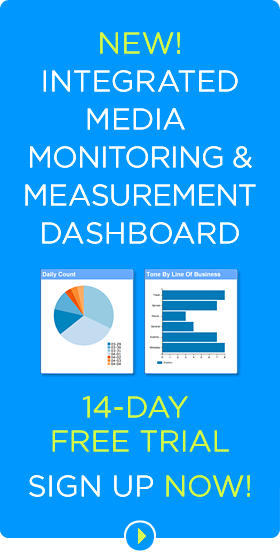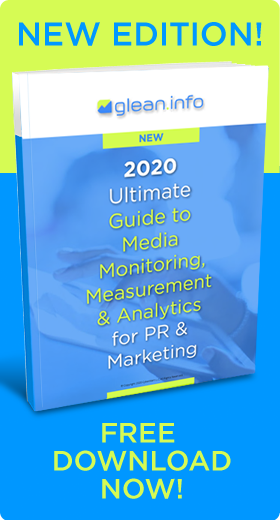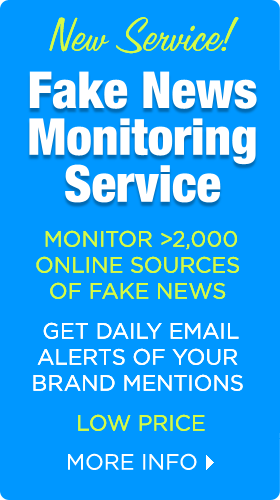 PR folks aren’t known for their math or analytics acumen. Many of us entered PR in the first place because we prefer words to numbers and dislike number-crunching. I know. I personally haven’t balanced a checking account in decades – and neither has my wife. (Our CPA balances the corporate accounts – and churns out financial analysis.)
PR folks aren’t known for their math or analytics acumen. Many of us entered PR in the first place because we prefer words to numbers and dislike number-crunching. I know. I personally haven’t balanced a checking account in decades – and neither has my wife. (Our CPA balances the corporate accounts – and churns out financial analysis.)
Math phobia is a primary reason too many public relations professionals avoid measuring their PR efforts and reporting results. That avoidance of measurement means number-orientated C-suite executives often view PR suspiciously.
Leading PR experts say that can – and must — change. PR results can be measured and most all PR pros can learn how to do it well. Measuring PR efforts is now mandatory if PR is to protect its credibility, budgets and business influence. PR measurement is more important than ever because of the spread of digital media and its focus on analytics. Becoming more analytical is essential in order to measure PR’s contribution to the corporate bottom line business goals. Decision-makers in marketing, sales and the C-suite want and expect to understand how PR impacts mainstream business metrics like sales, leads and ROI.
The benefits of PR measurement are clear. Measurement can prove that PR is doing its job well. That will lead to improved C-suite confidence in PR departments, more funding, and more influence among top corporate executives.
Don’t Run Away from Measurement
“Measurement should not be something we run away from,” argues Allan Dib, a senior vice president at MSLGROUP. “It should be something we run towards because the right idea and the right measurement plan can help us achieve our clients’ business objectives, win us awards and win us more clients.”
PR pros may dislike measurement due to a fear of failure, Dib says. But that fear is due to uncertainty over what they will be measured against, rather than lack of confidence in their abilities. Clients may state an objective and then measure PR against a different goal – or change objectives during the course of a project. (The same might be said about corporate leaders.)
The solution, he says, is to work closely with clients at the outset to clearly understand objectives and mutually agree on what outcomes to measure with what metrics before starting to a project.
The Magic PR Measurement Formula
Many PR people hope to find a single, magic formula, a plug-and-play solution for PR measurement. However, there’s no such plug-and-play solution for smart PR measurement, notes Shonali Burke, president and CEO of Shonali Burke Consulting Inc. “There is only one formula for successful PR measurement, and it’s probably not the one you’re looking for,” she writes in her blog. That formula is:
- Implement a quality listening solution.
- Analyze the data from that listening.
- Rinse and repeat, in other words, implement and improve.
That’s a principle or guideline, not a stock formula that tells you to input X to generate Y. Proper PR measurement uses data analysis to help uncover insights about campaigns, their trends, and their effects on business goals.
“You can put in place all sorts of metrics, dashboards, whatever. But most of that is process. It’s only when you start to put your little grey cells to work for you and your particular situation that you start to develop insights,” Burke writes. “And insights are what will guide your campaigns and programs – not toolboxes, or dashboards, or any other “stuff.”
Burke urges PR pros to beware of what she calls “PR by Numbers.” That’s a cookie-cutter approach to PR that involves churning out the same old, tried and tested tactics.
That kind of approach is usually not measurable, at least not in the right way, and rarely advances the organization’s business objectives. Just because the numbers match up, does not mean they are measurable.
The keys to measuring PR are to
- understand the goals you must achieve,
- set clear expectations at the outset of client relationships or campaigns about how PR strategy and tactics will be measured,
- agree on how often and how results will be reported,
- agree what can and cannot be measured.
- tailor metrics and measurement to specific company or client needs and goals.
“Do this, and you will see your PR clients and team partner in more results-centric, transparent and successful work together,” predicts Kate Finely, CEO of Belle Communications.
The goal of PR measurement is not to generate numbers; it is to gain insights into how well a campaign performed and how to improve results in the future. Every report on PR outcomes that details the metrics and numerical outcomes should also be accompanied by a text report that describes the insights gained from the numbers – and changes to be made based on the insights.
That’s not a “nice to have” for PR; it’s a “must have.” In order to succeed, PR agencies and PR departments in companies and not-for-profit organizations must now learn to love comprehensive measurement.
Bottom Line: PR leaders are urging public relations specialists to measure PR results against business goals. PR measurement can help PR agencies win clients and enable corporate public relations to survive and thrive in the battle for corporate funding and recognition.
William J. Comcowich founded and served as CEO of CyberAlert LLC, the predecessor of Glean.info. He is currently serving as Interim CEO and member of the Board of Directors. Glean.info provides customized media monitoring, media measurement and analytics solutions across all types of traditional and social media.





Trackbacks/Pingbacks